What is an Artificial Intelligence Robot and what are its applications?
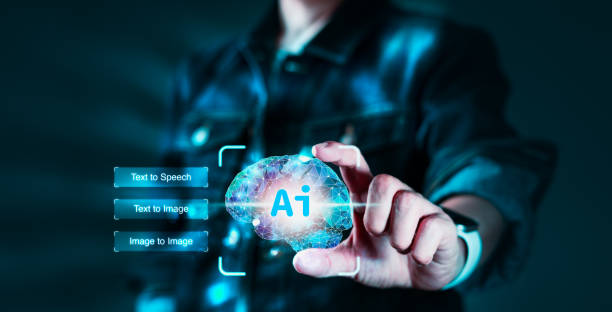
What is an Artificial Intelligence Robot and what are its applications?
An Artificial Intelligence Robot (AI Robot) is a combination of two fields: #Robotics and #Artificial_Intelligence.
These robots are not merely machines programmed to perform repetitive tasks; rather, they are capable of learning, reasoning, problem-solving, and decision-making based on their data and experiences.
In other words, an AI robot attempts to simulate human cognitive abilities in a machine.
The applications of AI robots are vast and diverse, used in various industries including manufacturing, medicine, customer service, and even art and entertainment.
For example, in production lines, intelligent robots can perform complex assembly tasks with high precision and speed.
In medicine, surgical robots assist doctors in performing surgeries with minimal invasiveness.
In customer service, chatbots answer customer questions and resolve their issues.
These robots have even entered artistic fields and and can compose music, paint, and write stories.
In summary, AI robots are a new generation of machines that, by leveraging artificial intelligence capabilities, can perform more complex and diverse tasks compared to traditional robots.
These robots have significant potential to change and improve human lives in various fields.
Tired of losing business opportunities due to not having a professional corporate website? Don’t worry anymore! With Rasaweb’s corporate website design services:
✅ Your brand’s credibility and professionalism will increase.
✅ You will attract more customers and sales leads.
⚡ Get a free consultation now to start!
Main Components of an AI Robot

Main Components of an Artificial Intelligence Robot
An artificial intelligence robot consists of several main components that work together to enable intelligent task performance.
These components include:
- Sensors: Sensors collect environmental information.
This information can include images, sounds, temperature, pressure, and other sensory data.
Sensors help the robot become aware of its surroundings. - Processor: The processor is the robot’s brain and is responsible for processing the information collected by the sensors.
The processor uses artificial intelligence algorithms for data analysis, reasoning, decision-making, and planning. - Actuators: Actuators are tools that allow the robot to interact with its environment.
These tools can include motors, arms, wheels, and other mechanical components. - Artificial Intelligence Software: AI software includes machine learning algorithms and models that allow the robot to learn, reason, and make decisions.
This software typically runs on the robot’s processor. - Power Source: The AI robot needs a power source to power its various components.
This power source can include batteries, solar cells, or a connection to electricity.
To better understand the function of an AI robot, it can be likened to a human.
Sensors act like human senses, the processor acts like the human brain, and actuators act like human hands and feet.
Artificial intelligence software acts like human knowledge and experience.
By combining these components, an AI robot can perform complex tasks that were previously only performable by humans.
Types of AI Algorithms Used in Robots
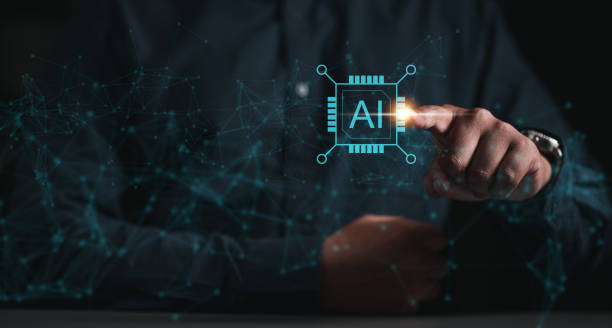
Types of Artificial Intelligence Algorithms Used in Robots
Artificial intelligence algorithms play a very important role in the performance of AI robots.
These algorithms help robots to learn, reason, make decisions, and interact with their environment.
There are various types of AI algorithms, each suitable for specific applications.
Some of the most common AI algorithms used in robots include:
- Machine Learning: These algorithms allow robots to learn from data and improve their performance.
There are various types of machine learning algorithms, including supervised learning, unsupervised learning, and reinforcement learning. - Natural Language Processing: These algorithms allow robots to understand human language and interact with it.
Natural language processing is used in customer service robots, personal assistant robots, and translator robots. - Computer Vision: These algorithms allow robots to understand images and videos.
Computer vision is used in industrial robots, medical robots, and autonomous robots. - Planning: These algorithms allow robots to plan to achieve a specific goal.
Planning is used in industrial robots, search and rescue robots, and game robots.
Choosing the right algorithm for an AI robot depends on the type of tasks the robot needs to perform.
For example, an industrial robot responsible for assembling parts requires computer vision and planning algorithms.
On the other hand, a customer service robot responsible for answering customer questions requires natural language processing algorithms.
| AI Algorithm | Application |
|---|---|
| Machine Learning | Pattern Recognition, Prediction |
| Natural Language Processing | Text Understanding and Generation |
| Computer Vision | Object and Face Recognition |
| Planning | Action Sequencing |
Advantages and Disadvantages of Using AI Robots
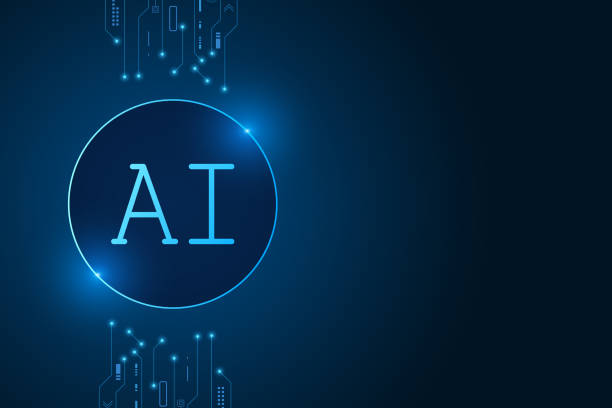
Advantages and Disadvantages of Using Artificial Intelligence Robots
The use of AI robots has several advantages and disadvantages.
Understanding these pros and cons is essential for making informed decisions about using this technology.
Advantages:
- Increased Productivity: AI robots can perform tasks with greater speed and accuracy than humans.
- Reduced Costs: AI robots can reduce labor costs.
- Improved Safety: AI robots can perform dangerous tasks without endangering human lives.
- 24/7 Availability: AI robots can operate around the clock without interruption.
- Performing Repetitive and Tedious Tasks: AI robots can perform repetitive and tedious tasks, allowing humans to focus on more creative tasks.
Disadvantages:
- High Initial Cost: Purchasing and implementing an AI robot can be expensive.
- Need for Expertise: Maintaining and repairing an AI robot requires specialized expertise.
- Job Displacement: The use of AI robots can lead to job loss for some individuals.
- Ethical Issues: The use of AI robots can create new ethical issues, such as accountability for the robot’s decisions.
- Limitations: AI robots still have limitations in some areas and cannot fully replace humans.
Considering these advantages and disadvantages, one can decide whether the use of an AI robot is suitable for a particular application.
It is important to carefully evaluate your needs and goals before investing in this technology.
Did you know that 94% of users’ first impression of a business is related to its website design? With professional corporate website design by **Rasaweb**, turn this first impression into an opportunity for growth.
✅ Attract more customers and increase sales
✅ Build credibility and trust in the eyes of the audience⚡ Get a free website design consultation!
The Role of AI Robots in Various Industries
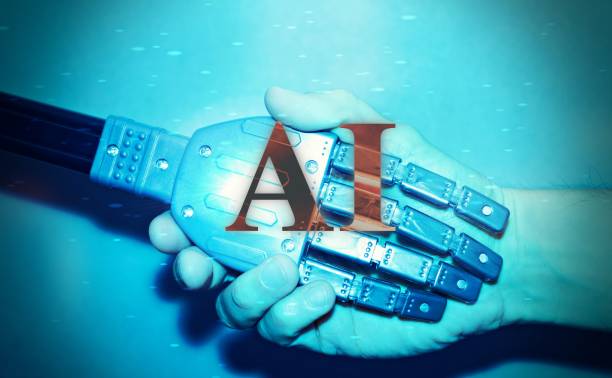
The Role of Artificial Intelligence Robots in Various Industries
AI robots are transforming various industries and play a significant role in increasing productivity, reducing costs, and improving quality.
Here are some applications of AI robots in different industries:
- Manufacturing: Intelligent robots are used in production lines for assembly, packaging, and quality control tasks.
These robots can work with high precision and speed, reducing human errors. - Medicine: Surgical robots assist doctors in performing surgeries with minimal invasiveness.
Pharmacist robots help pharmacists to precisely compound medications.
Nursing robots help nurses care for patients. - Customer Service: Chatbots answer customer questions and resolve their issues.
Telephony robots answer phone calls and direct them to the relevant departments. - Agriculture: Agricultural robots help farmers to plow fields, sow seeds, and harvest crops.
These robots can work with high precision and reduce water and fertilizer consumption. - Transportation: Autonomous robots help drivers drive more safely.
Delivery robots deliver packages to homes.
These are just a few examples of AI robot applications in various industries.
With technological advancements, AI robots are expected to play an even more significant role in human lives.
The use of AI robots in these industries, in addition to increasing productivity and reducing costs, can also lead to the creation of new job opportunities.
Challenges Facing the Development and Use of AI Robots

Challenges Facing the Development and Use of Artificial Intelligence Robots
The development and use of AI robots face numerous challenges.
These challenges include technical, ethical, social, and economic issues.
Technical Challenges:
- Complexity: Developing AI robots is complex and requires expertise in various fields, including robotics, artificial intelligence, and software.
- Cost: Developing AI robots is expensive and requires significant investment.
- Reliability: AI robots must be reliable and function correctly under various conditions.
- Security: AI robots must be secure and protected against cyberattacks.
Ethical Challenges:
- Accountability: If an AI robot makes a mistake, who will be responsible?
- Privacy: AI robots collect a lot of information.
How can individuals’ privacy be protected? - Discrimination: AI robots may be trained on biased data and make discriminatory decisions.
How can discrimination be prevented?
Social Challenges:
- Job Displacement: The use of AI robots can lead to job loss for some individuals.
- Inequality: The use of AI robots may increase inequality in society.
- Skills Shift: The use of AI robots requires new skills.
Economic Challenges:
- High Initial Cost: Purchasing and implementing an AI robot can be expensive.
- Need for Expertise: Maintaining and repairing an AI robot requires specialized expertise.
- Return on Investment: The return on investment for using AI robots can be long.
To overcome these challenges, collaboration among researchers, engineers, policymakers, and society is needed.
We must strive to develop and use AI robots in a way that benefits everyone.
The Future of AI Robots

The Future of Artificial Intelligence Robots
The future of AI robots is very bright and full of potential.
With technological advancements, AI robots are expected to play an even more significant role in human lives and assist us in various fields.
Some key trends in the future of AI robots include:
- Becoming Smarter: AI robots are becoming smarter and will be capable of performing more complex tasks.
- Becoming More Autonomous: AI robots are becoming more autonomous and will be able to make decisions without human intervention.
- Becoming Cheaper: AI robots are becoming cheaper and will be accessible to a wider range of individuals and organizations.
- Expanding Applications: AI robots are expanding their applications and will be used in various fields including medicine, manufacturing, customer service, and education.
In the future, it can be expected that AI robots will be present in homes, workplaces, and public environments, helping us with daily tasks.
These robots can assist us in caring for the elderly, educating children, and performing household chores.
They can also help us with specialized tasks at work, such as data analysis, product design, and project management.
AI robots will play a significant role in the future of industry and economy.
However, it is important to also pay attention to the challenges related to the development and use of AI robots and strive to develop and use this technology in a way that benefits everyone.
Ethical and responsible use of AI robots is essential to ensure a better future.
| Feature | Future Prediction |
|---|---|
| Intelligence | Significant Increase |
| Autonomy | Independent Decision-making |
| Application | Expansion in Various Industries |
| Cost | Reduction and Easier Access |
How to Choose an AI Robot?

How to Choose an Artificial Intelligence Robot?
Choosing a suitable AI robot can be a complex process.
Given the wide variety of robots and their applications, it is important to carefully evaluate your needs and goals before purchasing.
Here are some tips to help you choose the right AI robot:
- Define Needs and Goals: First and foremost, determine what you expect from the AI robot and what tasks you want to assign to it.
- Research and Investigate: Research different types of AI robots and their applications.
Read user reviews and consult with experts. - Compare: Compare different robots based on their features, price, and performance.
- Test: If possible, test the robot before purchasing.
- Support: Make sure the robot’s vendor or manufacturer provides adequate support.
In addition to these tips, paying attention to the following factors can also be effective in choosing a suitable AI robot:
- Budget: AI robots have different prices.
Determine your budget and choose a robot that falls within your budget. - Size and Weight: The robot’s size and weight should be appropriate for the available space and its application type.
- Capabilities: The robot should have the capabilities you need, such as sensors, actuators, and AI software.
- Ease of Use: The robot should be easy to use and not require extensive expertise.
By considering these tips, you can choose a suitable AI robot that will help you achieve your goals.
The right choice can significantly increase productivity and efficiency.
Tired of losing business opportunities due to not having a professional corporate website? Don’t worry anymore! With Rasaweb’s corporate website design services:
✅ Your brand’s credibility and professionalism will increase.
✅ You will attract more customers and sales leads.
⚡ Get a free consultation now to start!
Important Tips for Maintaining and Repairing AI Robots

Important Tips for Maintaining and Repairing Artificial Intelligence Robots
Proper maintenance and repair of an AI robot are essential to ensure its correct functioning and longevity.
Here are some important tips in this regard:
- Regular Inspection: Regularly inspect the robot and ensure its components are intact.
- Cleaning: Regularly clean the robot and prevent the accumulation of dust and contaminants.
- Lubrication: Regularly lubricate the robot’s moving parts.
- Software Updates: Regularly update the robot’s software.
- Repairs: In case of any problem, repair the robot as soon as possible.
In addition to these tips, adhering to the robot manufacturer’s instructions is also very important.
If you lack sufficient expertise, entrust robot repairs to specialists.
An AI robot is an investment, and proper maintenance ensures the return on this investment.
By following these tips, you can take good care of your robot and fully benefit from its performance.
To ensure the flawless performance of your AI robot, take #Maintenance_Steps seriously.
Ethical Concepts Related to AI Robots
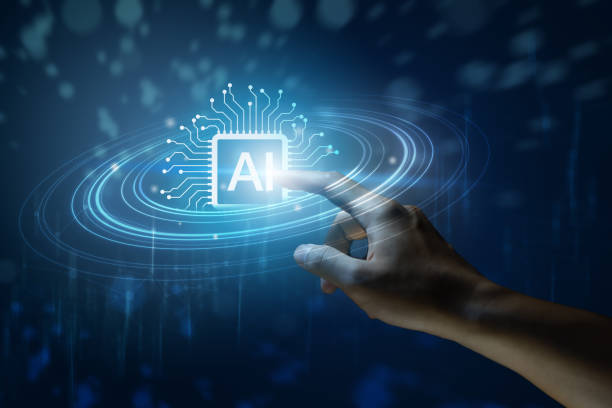
Ethical Concepts Related to Artificial Intelligence Robots
The development and use of AI robots are associated with numerous ethical concepts.
These concepts include accountability, privacy, discrimination, and security.
- Accountability: If an AI robot makes a mistake, who will be responsible? Is it the robot’s manufacturer, the robot’s user, or the robot itself?
- Privacy: AI robots collect a lot of information.
How can individuals’ privacy be protected? - Discrimination: AI robots may be trained on biased data and make discriminatory decisions.
How can discrimination be prevented? - Security: AI robots must be secure and protected against cyberattacks.
How can the robot’s security be ensured?
To resolve these ethical issues, there is a need to formulate laws and regulations that govern the use of AI robots.
Furthermore, we must strive to design AI robots in a way that respects ethical values.
Discussion and exchange of ideas on these ethical issues are essential for creating a fair and sustainable future with AI robots.
Use AI robots with caution and thoughtfulness.
Frequently Asked Questions
| Row | Question | Answer |
|---|---|---|
| 1 | What is an Artificial Intelligence Robot? | An AI robot is a machine capable of understanding, reasoning, learning, and problem-solving, and can perform complex tasks with relative autonomy. |
| 2 | What are the most important applications of AI robots? | Main applications include industrial manufacturing, customer services (chatbots), medicine and surgery, autonomous transportation, space exploration, and military affairs. |
| 3 | What is the main difference between an AI robot and a regular robot? | A regular robot merely follows programmed instructions, whereas an AI robot can learn from data, make decisions, and adapt itself to new environments. |
| 4 | How do AI robots learn? | They learn through machine learning algorithms (such as deep learning, reinforcement learning) and processing vast amounts of data, identifying patterns, and improving their performance. |
| 5 | Can AI robots have emotions? | Currently, AI robots do not have real emotions in the human sense. They can mimic or detect emotions, but they do not understand or experience them. |
| 6 | What are the current limitations of AI robots? | Limitations include the need for large amounts of data, inability to understand abstract concepts, lack of true creativity, ethical issues, and challenges of generalization in new environments. |
| 7 | What is the role of AI in the development of humanoid robots? | AI helps humanoid robots to walk, maintain balance, perceive their surroundings, interact with humans, and perform complex tasks. |
| 8 | How is the future of AI robots predicted? | AI robots are predicted to become smarter, more autonomous, and capable of performing more complex tasks in daily life and industry, with increased interaction with humans. |
| 9 | Can AI robots replace all human jobs? | It is unlikely that all human jobs will be replaced. Robots will take over many repetitive and dangerous tasks, but jobs requiring creativity, empathy, and ethical judgment will remain. |
| 10 | What ethical and social challenges arise with the expansion of AI robots? | Challenges include issues related to privacy, data security, ethical decision-making by robots, impact on employment, and accountability in case of errors. |
And other advertising services from Rasaweb Advertising Agency:
- Smart Advertising Campaign: Professional optimization for user engagement using precise audience targeting.
- Smart Custom Software: A fast and efficient solution to improve SEO ranking with a focus on SEO-driven content strategy.
- Smart Advertising Campaign: An effective tool for online growth with the help of intelligent data analysis.
- Smart Marketplace: A professional solution for campaign management focusing on precise audience targeting.
- Smart Website Development: Designed for businesses seeking user engagement through custom programming.
And over hundreds of other services in the field of internet advertising, advertising consultation, and organizational solutions.
Internet Advertising | Advertising Strategy | Advertorials
Resources
Artificial Intelligence and Robotics: A Comprehensive Guide
Complete AI Robot Tutorial
Smart Robot Technology
Future of Artificial Intelligence Robots
❓ Are you ready to revolutionize your business in the digital world? Rasaweb Afarin Digital Marketing Agency, specializing in professional e-commerce website design, SEO, and online brand promotion, paves the way for your success.
📍 Tehran, Mirdamad Street, next to Bank Markazi, Southern Kazeroun Alley, Ramin Alley, No. 6
☎️ 02126406207

